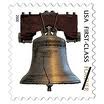
This is special Fightin' Bookworm-only bonus content from Jane's article Get Your Foot in the Door with a Strong Query Letter
DO write a short synopsis (a few sentences for a picture book or easy reader, a paragraph for a chapter book, 1-2 paragraphs for middle grade and young


 Before submitting your work, it’s essential that you study publishers’ lists to find the best fit for your manuscript. Your first stop is Children’s Writer’s & Illustrator’s Market published by Writer’s Digest Books. Note which publishers do the type of book you’ve written, and are also accepting submissions from new
Before submitting your work, it’s essential that you study publishers’ lists to find the best fit for your manuscript. Your first stop is Children’s Writer’s & Illustrator’s Market published by Writer’s Digest Books. Note which publishers do the type of book you’ve written, and are also accepting submissions from new 
 You’ve written your manuscript, received feedback from knowledgeable sources, and incorporated any revisions you agreed were necessary. Now you’ll tick off those final items on your to-do list before dropping your manuscript in the mail.
You’ve written your manuscript, received feedback from knowledgeable sources, and incorporated any revisions you agreed were necessary. Now you’ll tick off those final items on your to-do list before dropping your manuscript in the mail.